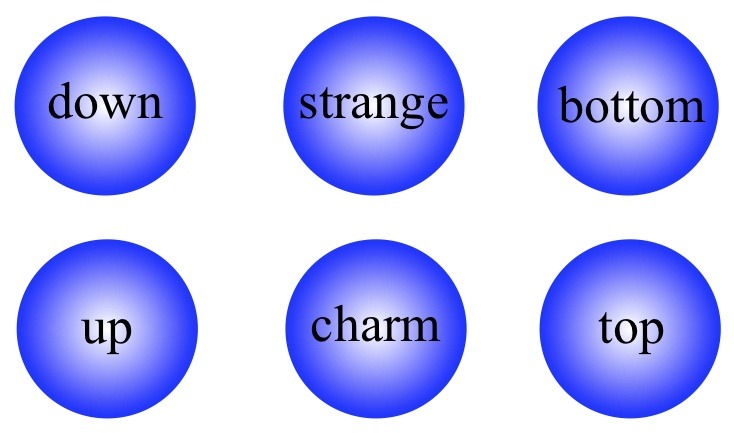In the grandeur tapestry of the cosmos, the subatomic realm beckons like a cryptic enigma, enticing inquisitive minds to delve deeper into its multifaceted complexities. At the forefront of this exploration are elementary particles—those infinitesimal building blocks that constitute the fabric of all matter and forces. Their profound implications extend far beyond mere scientific inquiry; they resonate with humanity’s enduring quest to decipher the universe’s ultimate mysteries.
Elementary particles, such as quarks, leptons, and bosons, are not just the minutiae of physics; they represent the fundamental constituents of everything we observe. The standard model of particle physics elegantly encapsulates our current understanding of these entities, delineating their interactions and classifications. Yet, beneath the seemingly exhaustive framework, questions linger. Are these particles truly elementary, or might they be composite structures forged from even more fundamental components? This inquiry elevates the discussion from the mundane to the extraordinary, hinting at the profound intricacies enveloping our universe.
The quest to unravel the essence of elementary particles is not merely an academic exercise; it transforms into a narrative of human intrigue. Since antiquity, philosophers and scientists alike have pondered the nature of matter, seeking to identify its core elements. This pursuit has witnessed significant milestones—from Democritus’s atomism to Dalton’s atomic theory, ultimately culminating in the modern quantum framework. Each iteration represents a dialectic evolution, shedding light on the particle zoo while concomitantly unveiling deeper undercurrents of reality.
One of the most compelling facets of elementary particles is their duality and the perplexities that arise therefrom. Quantum mechanics posits that particles exhibit both wave-like and particle-like characteristics, culminating in a framework riddled with paradoxes. The wave-particle duality leads to an array of philosophical dilemmas, such as the implications of observation on reality itself. Are these particles entities with well-defined positions and velocities, or do they exist in a state of potentiality, only manifesting reality upon interaction? This inquiry compels us to rethink the very fabric of existence and our role within it.
Moreover, the tantalizing phenomenon of entanglement evokes an even more profound contemplation. When particles become entangled, a mysterious correlation establishes between them, transcending the constraints of space and time. This non-locality profoundly challenges classical notions of separateness, suggesting an interconnectedness that reverberates throughout the cosmos. As observers find themselves disillusioned by classical separateness, the realization dawns that the universe may operate on an intricate web of relationships—an interplay of particles that usurps straightforward causality.
Contemplating the implications of elementary particles extends beyond theoretical curiosity; it invokes deeper existential questions. The universe’s great narrative is inexorably intertwined with these particles. In their fleeting existence, they embody the constant interplay of creation and annihilation, reflecting nature’s cyclical dance of birth and decay. Understanding the lifecycles of particles might mirror our own ephemeral existence, prompting introspection about our place in the grand scheme of the cosmos.
Investigating the role of elementary particles in the cosmos also unveils practical significance. Our technological advancements frequently owe their genesis to the insights gathered from subatomic physics. From the creation of semiconductors to advanced imaging techniques in medical sciences, the implications of studying elementary particles stretch into everyday conveniences. In many respects, the journey to understand the elusive elementary particles evokes the spirit of discovery that has driven humanity for centuries.
As we venture into uncharted territories, the intercession of dark matter and dark energy—vastly enigmatic components constituting much of the universe—highlights our ignorance. The search for new particles, possibly lying outside the realm of the standard model, suggests that we are on the precipice of transformative discoveries. Theoretical frameworks such as string theory posit that particles may not be the ultimate reality but rather vibrations of underlying strings, offering tantalizing glimpses into a more fundamental level of existence. This suggests a universe far richer and more mysterious than we can ascertain.
Furthermore, the interplay of elementary particles with cosmological phenomena enthuses discourse among physicists and philosophers alike. Consider the Higgs boson, an embodiment of the Higgs field, which imparts mass to other elementary particles. The mass-energy equivalence encapsulated in Einstein’s pivotal equation, E=mc², bridges our understanding of subatomic interactions with celestial mechanics. This convergence reinforces the notion that to grasp the universe, one must grasp its elementary constituents from the microscopic viewpoint.
Ultimately, the relationship between mystery and elementary particles reflects a broader philosophical engagement with the universe. The allure lies not solely in solving the riddle but in acknowledging that some questions may remain eternally enigmatic. The exploration of elementary particles is a testament to human ingenuity, epitomizing our relentless pursuit of knowledge amidst the vast uncertainties of existence. As researchers courageously peel back the layers of reality, they concurrently unveil the magnificence and profundity woven throughout the cosmos.
In conclusion, is the mystery of the universe hidden within the realm of elementary particles? The answer is a resounding yes—these particles serve as the gateways to fathoming the deeper structures of reality. Through rigorous inquiry and boundless curiosity, humanity continues to elucidate these fragments of existence, unraveling profound truths that bind us to the cosmos. As physicists ascend this intricate mount of understanding, they realize that the quest for knowledge, much like the universe itself, is an ever-evolving odyssey replete with wonder.












